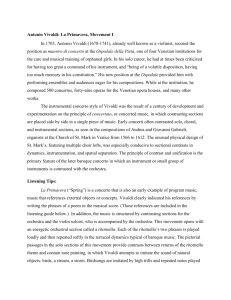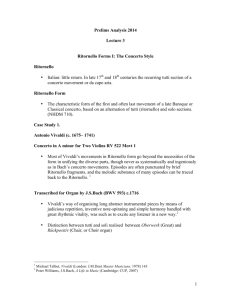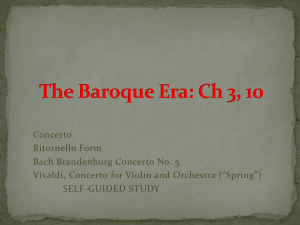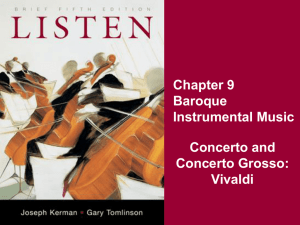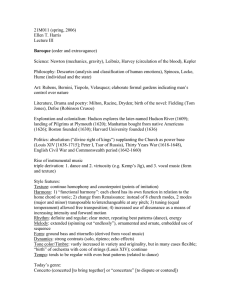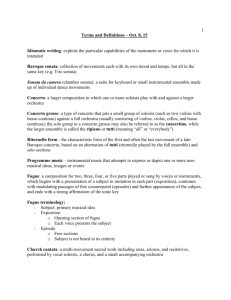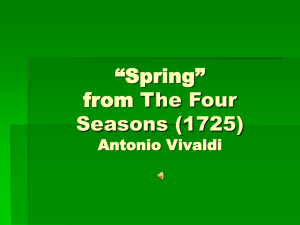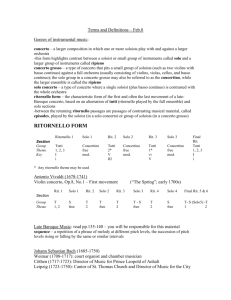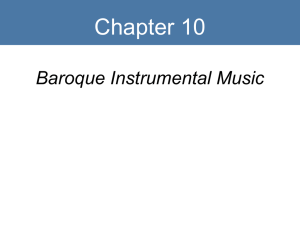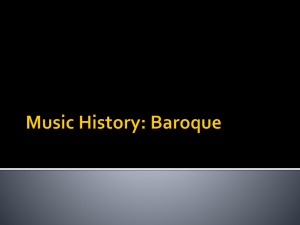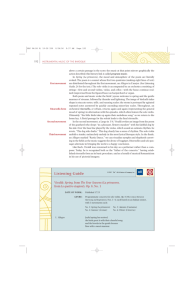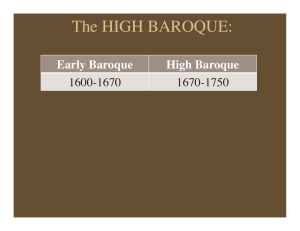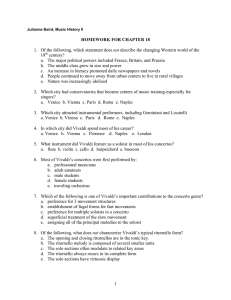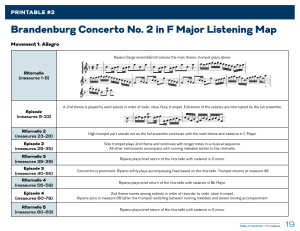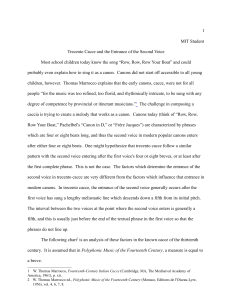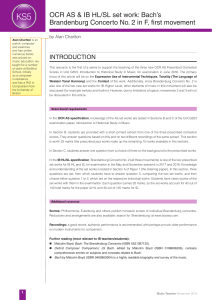Baroque.studyGuide
advertisement
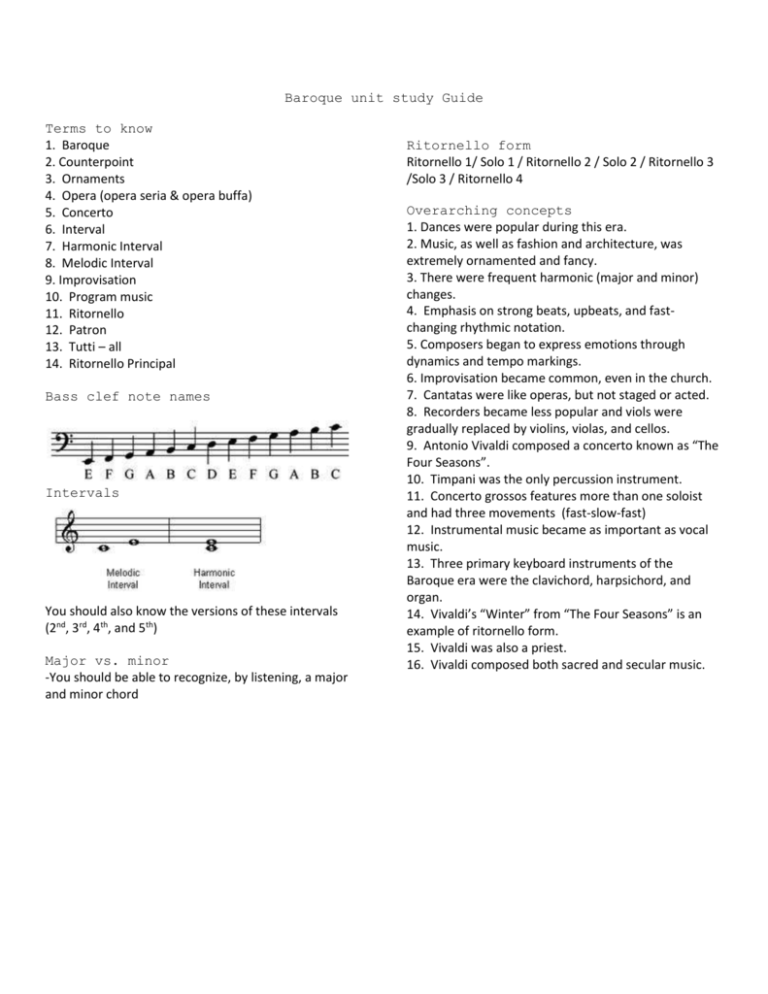
Baroque unit study Guide Terms to know 1. Baroque 2. Counterpoint 3. Ornaments 4. Opera (opera seria & opera buffa) 5. Concerto 6. Interval 7. Harmonic Interval 8. Melodic Interval 9. Improvisation 10. Program music 11. Ritornello 12. Patron 13. Tutti – all 14. Ritornello Principal Bass clef note names Intervals You should also know the versions of these intervals (2nd, 3rd, 4th, and 5th) Major vs. minor -You should be able to recognize, by listening, a major and minor chord Ritornello form Ritornello 1/ Solo 1 / Ritornello 2 / Solo 2 / Ritornello 3 /Solo 3 / Ritornello 4 Overarching concepts 1. Dances were popular during this era. 2. Music, as well as fashion and architecture, was extremely ornamented and fancy. 3. There were frequent harmonic (major and minor) changes. 4. Emphasis on strong beats, upbeats, and fastchanging rhythmic notation. 5. Composers began to express emotions through dynamics and tempo markings. 6. Improvisation became common, even in the church. 7. Cantatas were like operas, but not staged or acted. 8. Recorders became less popular and viols were gradually replaced by violins, violas, and cellos. 9. Antonio Vivaldi composed a concerto known as “The Four Seasons”. 10. Timpani was the only percussion instrument. 11. Concerto grossos features more than one soloist and had three movements (fast-slow-fast) 12. Instrumental music became as important as vocal music. 13. Three primary keyboard instruments of the Baroque era were the clavichord, harpsichord, and organ. 14. Vivaldi’s “Winter” from “The Four Seasons” is an example of ritornello form. 15. Vivaldi was also a priest. 16. Vivaldi composed both sacred and secular music.
